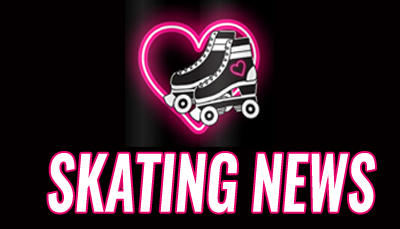Skateboarding is not just a sport; it’s a lifestyle. And part of that lifestyle involves knowing how to properly handle your skateboard when you’re not riding it. Whether you’re walking around the village or campus, you need to know the best techniques for carrying your skateboard without causing any damage or discomfort. In this comprehensive guide, we will explore different methods how to hold a skateboard like a pro. So let’s dive in and learn how to hold a skateboard while walking.
How to Hold a Skateboard Properly
When it comes to carrying your skateboard, the first step is to find your dominant hand. While it’s not necessary to use it exclusively, it’s best to carry the skateboard with your firmer hand for better control and stability.
To hold the skateboard properly, place your hand on your side with the palm facing the side of your thigh. Keep your arm straight and grab the skateboard with either hand. Position the deck horizontally as you hold it with your dominant hand. Place your palm all over the deck’s width and extend your fingers to tuck the edge of the board. For weight balance, it’s ideal to hold the skateboard in the middle, ensuring that the bottom side of the deck faces your body to avoid any discomfort from the grip tape.
The Horizontal Hold
The most common way to hold a skateboard is horizontally, with your arm stretched over the graphics and your fingers curled around the bottom edge. This method has several advantages, including comfort and ease of maneuverability. By holding the board this way, you ensure that the grip tape faces your body, protecting your fingers from rubbing against it. Additionally, this grip places the skateboard against your hip, allowing for a smooth and comfortable carry. Whether you’re walking down the street or navigating crowded areas, this horizontal hold keeps your board secure and out of the way.
Grip Tape Towards Your Body
Similar to the horizontal hold, you can also hold your skateboard horizontally with the grip tape facing your arm. While this grip may initially cause discomfort as the grip tape rubs against your arm, a simple adjustment can alleviate this issue. By slightly moving your hand away from your body, you can tip the skateboard away from your arm, allowing it to rest against your hip. This modification ensures a pain-free grip and a more enjoyable skateboarding experience.

Pinching Methods
Another popular way to hold a skateboard is by pinching it. Pinching refers to gripping the skateboard either by the nose or the side. Each pinching method offers unique benefits and is suitable for specific situations.
Pinching the Nose
When you’re in the middle of a skate session and need a temporary hold, pinching the nose is a convenient option. By standing the skateboard vertically and grabbing the nose, you can quickly drop it and resume riding. This method is particularly useful when skating with friends and transitioning between tricks. However, it’s important to note that holding the board by the nose for an extended period can strain your hand and arm, making it less ideal for long-distance carrying.

Pinching the Side
If you’re looking for a slightly different grip, try pinching the side of your skateboard. This method involves laying the board horizontally on the ground and pinching the top edge. The grip tape’s orientation doesn’t matter here; choose the most comfortable position for your hand. When standing up, the board will hang off your extended arm, just below your hip. Pinching the side offers the advantage of keeping the board further off the ground, reducing the risk of the tail dragging and hitting obstacles. However, be cautious as this grip may become uncomfortable and cause hand cramps after prolonged use.
Using a Backpack
For those who frequently carry their skateboard across town or during transit, using a backpack with skateboard straps is a game-changer. These specialized backpacks feature velcro straps that securely fasten your board to your bag, eliminating the need to physically hold it. By resting your trucks against the straps, you can ensure that your board stays in place and doesn’t slide out.
Mall Grabbing
One of the most debated ways to hold a skateboard is known as mall grabbing. This method involves holding the skateboard vertically with your hand wrapped around the top truck. While some may view this technique as a rookie move or a sign of being a “poser,” it does offer certain advantages, especially for beginners. Mall grabbing provides a comfortable grip and feels natural when starting out. However, it’s crucial to consider the drawbacks associated with this hold.

Drawbacks of Mall Grabbing
Firstly, when you mall grab, your hand comes into contact with the dirtiest part of your skateboard—the trucks. Over time, trucks accumulate skate wax and dirt from sliding across various surfaces. When you grab them, you may feel this residue on your hands, which can be unpleasant. Secondly, holding the skateboard vertically in this manner causes it to hang low to the ground, increasing the likelihood of hitting objects and potentially damaging the board. Moreover, the grip tape rubs against your leg while walking, which can cause discomfort and scuff up your pants.
Understanding the Basics of Skateboard Anatomy
Before we delve into the techniques of holding a skateboard, it’s essential to understand the fundamental components that make up this iconic piece of sports equipment. A typical skateboard comprises several essential parts, each serving a specific purpose in ensuring balance, stability, and maneuverability.
Deck: The deck is the flat board of the skateboard, usually made from layers of maple wood. It provides the surface on which the skater stands and performs tricks. Decks come in various shapes and sizes, catering to different styles of skateboarding.
Truck: Trucks are the metal T-shaped components mounted underneath the deck. They hold the wheels and allow the skateboard to pivot. Properly adjusted trucks are crucial for smooth turns and tricks.
Wheels: Skateboard wheels are typically made from polyurethane and come in various sizes and hardness levels. Larger wheels offer more speed, while softer wheels provide better grip. Choosing the right wheels depends on your skating style and preferences.
Bearings: Bearings are small, round metal pieces that fit inside the wheels. They determine how smoothly the wheels spin. High-quality bearings reduce friction, allowing for faster and more effortless movement.
Grip Tape: Grip tape is a rough, sandpaper-like sheet affixed to the top of the deck. It provides traction for the skater’s shoes, preventing slipping during tricks. Proper grip tape ensures a secure footing, enabling precise control over the board.
Understanding how each of these components contributes to the overall functionality of the skateboard is essential for mastering the art of holding it correctly. Now that we have a basic understanding of skateboard anatomy, let’s move on to the importance of proper grip.

Conclusion
Knowing how to hold a skateboard while walking is essential for convenient transportation. By following the tips shared in this guide, you can ensure the proper execution of different holding methods. Whether you choose the proper way to hold the skateboard, holding it through the nose for short periods, or carrying it on your shoulders, always prioritize your comfort.
Caring for your skateboard also means knowing how to handle it when you’re not riding it. By mastering the art of holding a skateboard, you can keep your board safe and secure while you’re on the move. So remember these techniques and enjoy the convenience of carrying your skateboard like a pro.
FAQs
How do you hold a skateboard without looking like a poser?
Holding a skateboard authentically involves confidence and comfort. To avoid looking like a poser, make sure you have a genuine interest in skateboarding. Practice your skills, learn the culture, and engage with the community. Holding a skateboard confidently, with a relaxed grip and a natural stance, demonstrates your genuine passion for the sport.
How do you steer a skateboard for beginners?
Steering a skateboard is fundamental for beginners. To steer effectively, shift your body weight slightly in the direction you want to go. If you want to turn left, lean your body gently to the left, and if you want to turn right, lean to the right.
Why is it important to learn how to hold a skateboard properly?
Holding a skateboard properly is essential for balance, stability, and control. It ensures your safety while riding and helps in executing tricks effectively.
How do I find my comfortable riding stance?
Experiment with both regular (left foot forward) and goofy (right foot forward) stances. Your comfortable stance is the one that feels natural to you and provides the best balance and control.



